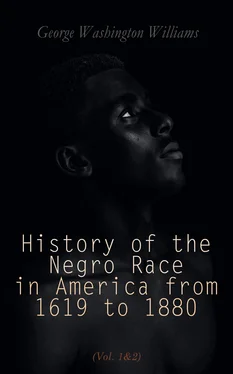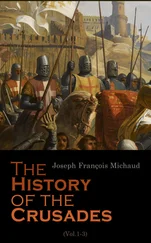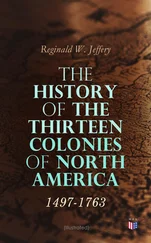1Gen. i. 27.
2Gen. ii. 7.
3Gen. ii. 15.
4Gen. i. 28.
5Gen. vi. 5 sq.
6Encycl. of Geo., p. 255.
7If the Apostle Paul had asserted that all men resembled each other in the color of their skin and the texture of their hair, or even in their physiological make-up, he would have been at war with observation and critical investigation. But, having announced a wonderful truth in reference to the unity of the human race as based upon one blood, science comes to his support, and through the microscope reveals the corpuscles of the blood, and shows that the globule is the same in all human blood.
8Deut. xxxii. 8, 9: "When the Most High divided to the nations their inheritance, when he separated the sons of Adam, he set the bounds of the people according to the number of the children of Israel. For the Lord's portion is his people; Jacob is the lot of his inheritance."
9Rom. v. 12, 14–21.
10Luke xxiii, 26: Acts vi. 9, also second chapter, tenth verse. Matthew records the same fact in the twenty-seventh chapter, thirty-second verse. "And at they came out, they found a man of Cyrene, Simon by name: him they compelled to bear his cross."
11See Melville's Sermons.
12Acts viii. 27.
13Pliny says the Ethiopian government subsisted for several generations in the hands of queens whose name was Candace .
14See Liddell and Scott's Greek Lexicon.
15Jones's Biblical Cyclopædia, p. 311.
16The term Ethiope was anciently given to all those whose color was darkened by the sun.— Smyth's Unity of the Human Races , chap. i. p. 34.
17Gen. ix. 24, 25. See also the twenty-sixth and twenty-seventh verses.
18Bible Views of Slavery, p. 7.
19Gen. ix. 23.
20Plutarch, De Iside et Osiride. See also Dr. Morton, and Ethnological Journal, 4th No p. 172.
21Gen. x. 6–20.
22Dr. Bush.
23Gen. ix. I.
24Jones's Biblical Cyclopædia, p. 393. Ps. lxxviii. 51.
25Ps. cv. 23.
26If Noah's utterance were to be regarded as a prophecy, it applied only to the Canaanites, the descendants of Canaan, Noah's grandson. Nothing is said in reference to any person but Canaan in the supposed prophecy.
CHAPTER II.
THE NEGRO IN THE LIGHT OF PHILOLOGY, ETHNOLOGY, AND EGYPTOLOGY.
Table of Contents
Cushim and Ethiopia.—Ethiopians, White and Black.—Negro Characteristics.—The Dark Continent.—The Antiquity of the Negro.—Indisputable Evidence.—The Military and Social Condition of Negroes.—Cause of Color.—The Term Ethiopian.
There seems to be a great deal of ignorance and confusion in the use of the word "Negro;" 27and about as much trouble attends the proper classification of the inhabitants of Africa. In the preceding chapter we endeavored to prove, not that Ham and Canaan were the progenitors of the Negro races—for that is admitted by the most consistent enemies of the blacks—but that the human race is one , and that Noah's curse was not a divine prophecy.
The term "Negro" seems to be applied chiefly to the dark and woolly-haired people who inhabit Western Africa. But the Negro is to be found also in Eastern Africa. 28Zonaras says, "Chus is the person from whom the Cuseans are derived. They are the same people as the Ethiopians." This view is corroborated by Josephus. 29Apuleius, and Eusebius. The Hebrew term "Cush" is translated Ethiopia by the Septuagint, Vulgate, and by almost all other versions, ancient and modern, as well as by the English version. "It is not, therefore, to be doubted that the term ' Cushim ' has by the interpretation of all ages been translated by 'Ethiopians,' because they were also known by their black color, and their transmigrations, which were easy and frequent." 30But while it is a fact, supported by both sacred and profane history, that the terms "Cush" and "Ethiopian" were used interchangeably, there seems to be no lack of proof that the same terms were applied frequently to a people who were not Negroes. It should be remembered, moreover, that there were nations who were black, and yet were not Negroes. And the only distinction amongst all these people, who are branches of the Hamitic family, is the texture of the hair. "But it is equally certain, as we have seen, that the term 'Cushite' is applied in Scripture to other branches of the same family; as, for instance, to the Midianites, from whom Moses selected his wife, and who could not have been Negroes. The term 'Cushite,' therefore, is used in Scripture as denoting nations who were not black, or in any respect Negroes, and also countries south of Egypt, whose inhabitants were Negroes; and yet both races are declared to be the descendants of Cush, the son of Ham. Even in Ezekiel's day the interior African nations were not of one race; for he represents Cush, Phut, Lud, and Chub, as either themselves constituting, or as being amalgamated with, 'a mingled people' (Ezek. xxx. 5); 'that is to say,' says Faber, 'it was a nation of Negroes who are represented as very numerous— all the mingled people.'" 31
The term "Ethiopia" was anciently given to all those whose color was darkened by the sun. Herodotus, therefore, distinguishes the Eastern Ethiopians who had straight hair, from the Western Ethiopians who had curly or woolly hair. 32. They are a twofold people, lying extended in a long tract from the rising to the setting sun." 33
The conclusion is patent. The words "Ethiopia" and "Cush" were used always to describe a black people, or the country where such a people lived. The term "Negro," from the Latin " niger " and the French " noir ," means black; and consequently is a modern term, with all the original meaning of Cush and Ethiopia, with a single exception. We called attention above to the fact that all Ethiopians were not of the pure Negro type, but were nevertheless a branch of the original Hamitic family from whence sprang all the dark races. The term "Negro" is now used to designate the people, who, in addition to their dark complexion, have curly or woolly hair. It is in this connection that we shall use the term in this work. 34
Africa, the home of the indigenous dark races, in a geographic and ethnographic sense, is the most wonderful country in the world It is thoroughly tropical. It has an area in English square miles of 11,556,600, with a population of 192,520,000 souls. It lies between the latitudes of 38° north and 35° south; and is, strictly speaking, an enormous peninsula, attached to Asia by the Isthmus of Suez. The most northern point is the cape, situated a little to the west of Cabo Blanco, and opposite Sicily, which lies in latitude 37° 20' 40" north, longitude 9° 41' east. Its southernmost point is Cabo d'Agulhas, in 34° 49' 15" south; the distance between these two points being 4,330 geographical, or about 5,000 English miles. The westernmost point is Cabo Verde, in longitude 17° 33' west; its easternmost, Cape Jerdaffun, in longitude 51° 21' east, latitude 10° 25' north, the distance between the two points being about the same as its length. The western coasts are washed by the Atlantic, the northern by the Mediterranean, and the eastern by the Indian Ocean. The shape of this "dark continent" is likened to a triangle or to an Oval. It is rich in oils, ivory, gold, and precious timber. It has beautiful lakes and mighty rivers, that are the insoluble problems of the present times.
Of the antiquity of the Negro there can be no doubt. He is known as thoroughly to history as any of the other families of men. He appears at the first dawn of history, and has continued down to the present time. The scholarly Gliddon says, that "the hieroglyphical designation of 'KeSH,' exclusively applied to African races as distinct from the Egyptian, has been found by Lepsius as far back as the monuments of the sixth dynasty, 3000 B.C. But the great influx of Negro and Mulatto races into Egypt as captives dated from the twelfth dynasty; when, about the twenty-second century, B.C., Pharaoh SESOUR-TASEN extended his conquests up the Nile far into Nigritia. After the eighteenth dynasty the monuments come down to the third century, A.D., without one single instance in the Pharaonic or Ptolemaic periods that Negro labor was ever directed to any agricultural or utilitarian objects." 35The Negro was found in great numbers with the Sukim, Thut, Lubin, and other African nations, who formed the strength of the army of the king of Egypt, Shishak, when he came against Rehoboam in the year 971 B.C.; and in his tomb, opened in 1849, there were found among his depicted army the exact representation of the genuine Negro race, both in color, hair, and physiognomy. Negroes are also represented in Egyptian paintings as connected with the military campaigns of the eighteenth dynasty. They formed a part of the army of Ibrahim Pacha, and were prized as gallant soldiers at Moncha and in South Arabia. 36And Herodotus assures us that Negroes were found in the armies of Sesostris and Xerxes; and, at the present time, they are no inconsiderable part of the standing army of Egypt. 37Herodotus states that eighteen of the Egyptian kings were Ethiopians. 38
Читать дальше












